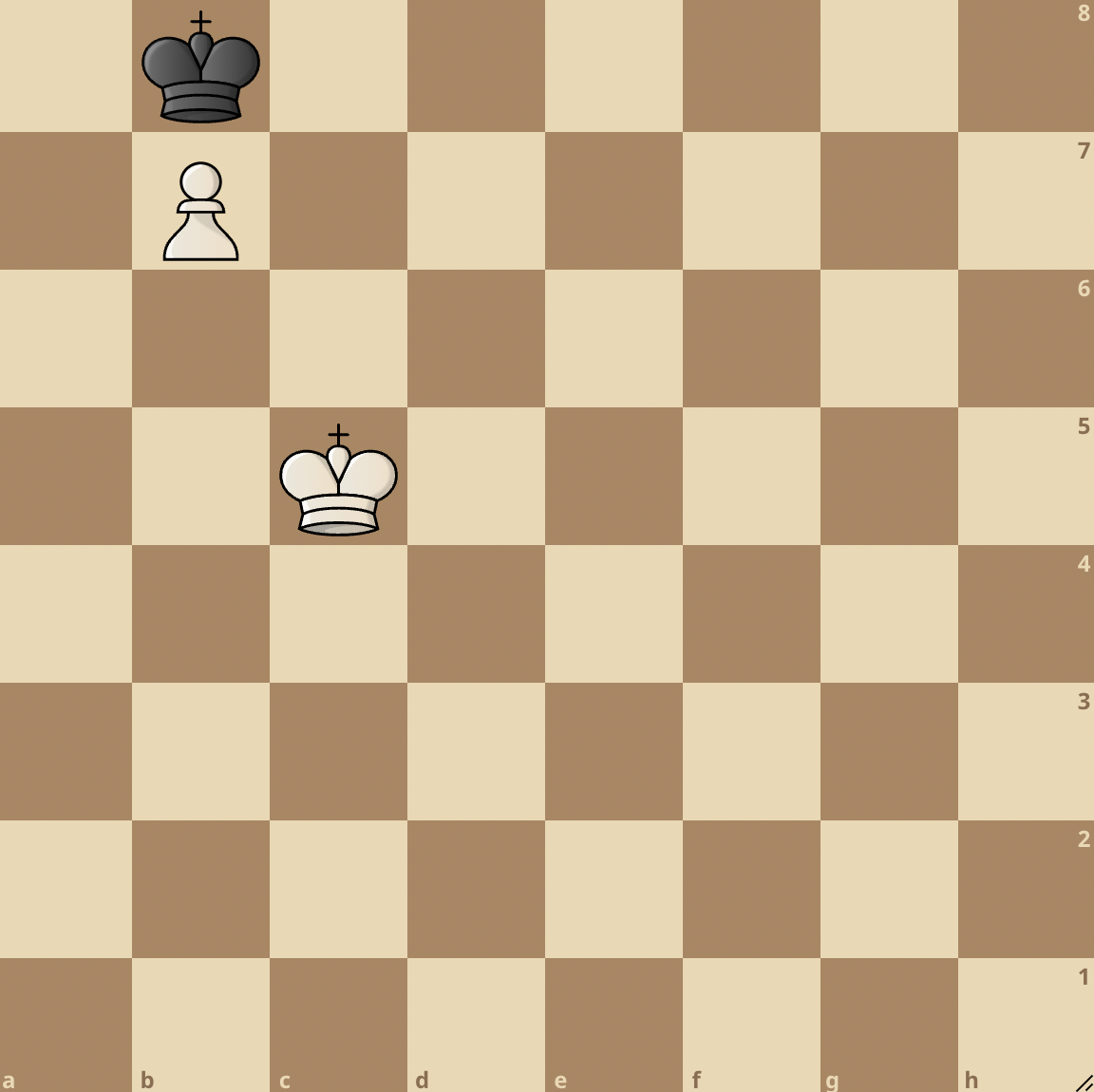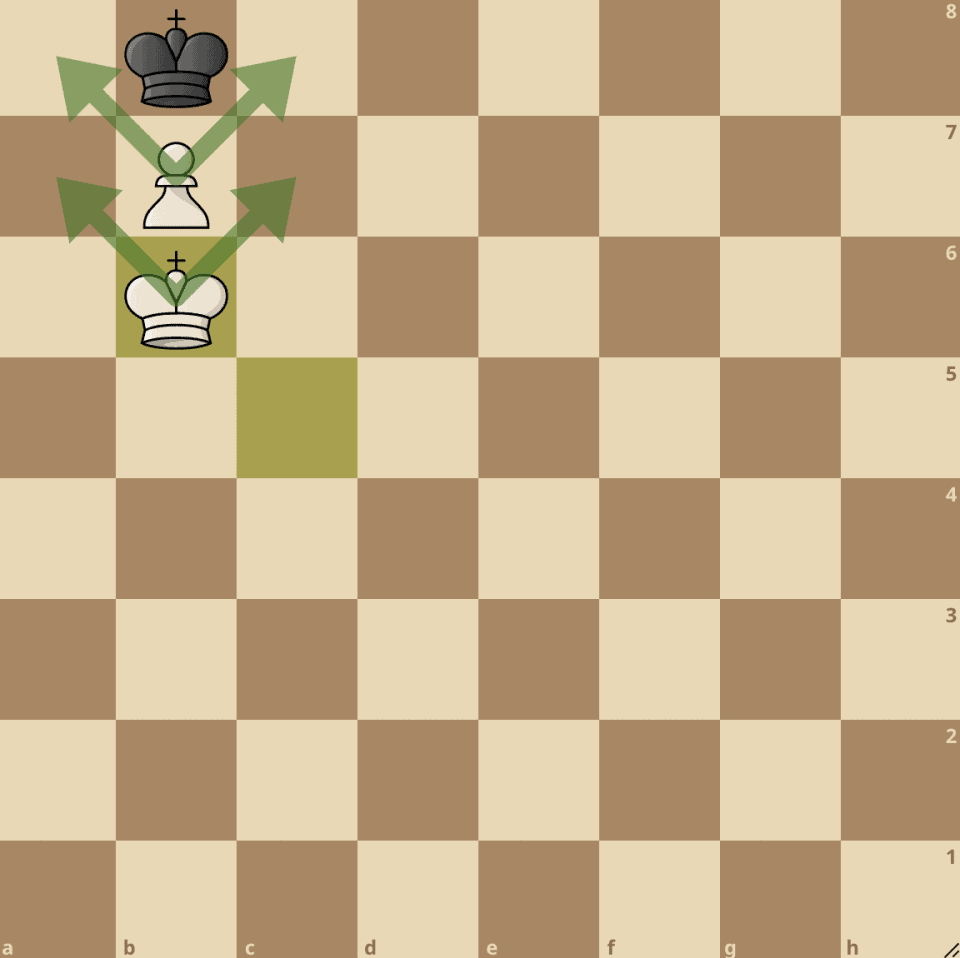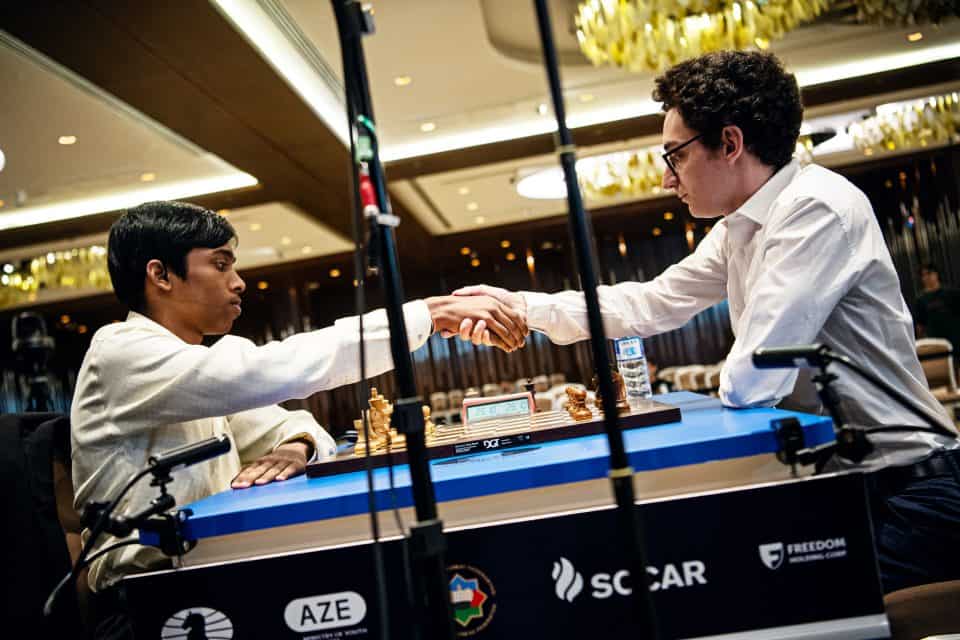A stalemate is a type of draw that occurs when your opponent is unable to make any legal moves to a safe square while not being checked.
See the position below:

White is completely winning in this king and pawn endgame but it’s possible to misplay this and get a stalemate.

Ideally White should play 1. Kc6 making way for the Black king to forcefully vacate the promotion square and move to a7.
After which White can play 2. Kc7 and promote the pawn with 3. b8Q with mate to happen in a few moves.
But can White blunder this position? Yes.

If White chooses to play 1. Kb6, that’s immediately a stalemate. In other words, the Black king doesn’t have any legal squares to move to (as shown above) and the game is automatically a draw.
Stalemate usually happens to players who misplay winning positions and it can be really painful sometimes. We mean playing a game perfectly to only blunder a move in the endgame and handover a draw to your opponent.
This is why everyone, irrespective of chess levels should be careful not to avoid stalemate as much as possible in their games.
A stalemate usually occurs when there are only a few pieces left on the board, but it can also happen in the middle game after you’ve castled and developed your pieces.
One of the longest games in the 1978 World Chess Championship final match ended in a stalemate between grandmasters Viktor Korchnoi and Anatoly Karpov. The game ended after 124 moves!
You can view the game below. Touch the moves or move the board around for a better interactive experience.
How To Avoid Stalemate In Chess When You’re Winning
Most of the time, you just need to spend an extra second or two making sure you’re not stalemating your opponent – especially since “stalemate tricks” are ways for your opponent to cheat you out of a win.
Once you’ve mastered the basic checkmates, you shouldn’t need more than two queens, and even then, the second queen is probably unnecessary.
Getting extra queens, on the other hand, increases your chances of accidentally stalemating your opponent.
If you don’t need to promote a pawn, checkmate with what you’ve got. The threat of the promotion is probably more serious than the promotion itself, so save it for when you really need it.
Here are some more tips:
1. Be Very Careful During The Endgame
It’s of no use to gain the material advantage during the opening and the middlegame but not utilize that during the endgame.
Because of that, you have to take extra care during the endgame because some silly mistakes can also cost you a winning match.
2. Don’t Give Much Attention To Less Threatening Pieces
During the endgame, it sometimes becomes tempting, especially for the newbies, to take away the easily placed opponent’s pieces.
But doing that can give rise to a stalemate.
So always try to focus on the critical pieces than capturing rather the less threatening pieces. Capturing the less threatening pieces will divert your attention.
3. Drive Your Opponent’s King Towards The Edge Of The Board
To avoid a stalemate and win the game, the best way is to checkmate your opponent. Right?
Now to checkmate, one of the best well-known strategies is to cut off the squares of the opponent’s king and drive it towards the edge of the board.
Especially when the opponent has only a lone king, other pieces are not there or are blocked.
Because if the opponent’s king is in the centre, then it will escape every time we give it a check. And you already know that multiple successive checks will cause the game to end in a draw.
4. Think Ahead And Anticipate Your Opponent’s Next Move
When you reach the endgame, that is when your real test as a chess player begins.
Whatever decisions you take, whatever moves you make will lead you to either win, lose or draw the game.
Now at this stage, it is very important to think ahead and predict the next possible move of your opponent. This will help you to make decisions more accurately.
By thinking ahead of your opponent, you will come to know what’s the motive of your opponent.
We recommend these resources for further reading:







2 comments
Tom smith
Does it matter if one gets a stalemate playing black or white. Some one told me a stalemate on a white king is a win for black ?
Chessforsharks Editorial Team
Hi Tom, If the White king is “stalemated”, the game is a draw automatically according to the rules of FIDE. Some variants might say it’s a win for Black but as far as the standard rules of chess apply, it’s a draw.